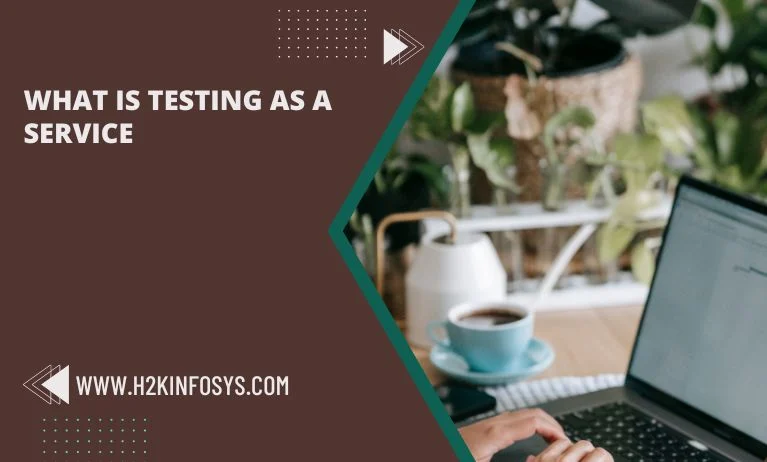Testing as a Service (TaaS) is an outsourcing model in which service providers, as opposed to internal staff, carry out testing tasks related to certain of an organization’s core activities.TaaS may entail hiring consultants to assist and counsel staff members or even outsourcing a testing task to a service provider. A business typically continues to conduct some testing internally.
TaaS works best for specialized testing projects that don’t necessitate a great deal of in-depth understanding of the architecture or system. Automated regression testing, performance testing, security testing, application testing, testing of significant ERP (enterprise resource planning) software, and monitoring/testing of cloud-based applications are services that are well suited for the TaaS model. TaaS is also referred to as on-demand Testing as a Service.
TaaS is an essential part of QA testing and is included in a good QA testing training course.
How does testing as a service work?
TaaS is essentially when a company employs a third party to carry out testing operations that would typically be done internally. Companies buy infrastructure, testing software, and tools from suppliers, frequently on a pay-per-use basis. TaaS can refer to a single step in the Testing as a Service process, such as a platform, a set of infrastructure and software components, or the outsourcing of a whole department. Whatever its form, TaaS entails a provider taking on a portion of the organization’s testing duties.
TaaS can be utilized for automated testing procedures that would take longer to perform manually if done by internal staff. Additionally, it can be employed when the customer organization lacks the capacity to do testing on its own. The resource could be labor, capital, manpower, or equipment. TaaS might not be the best choice for enterprises that demand a deep understanding of their infrastructure.
There are various types of TaaS with their own specific procedures, but in general, TaaS will operate in this way:
- To conduct the test, a scenario and environment are built. This could be referred to as a user scenario for software testing.
- The company’s response to that circumstance will be put to the test.
- The vendor’s safe testing environment is used to conduct the test.
- The vendor reviews the company’s performance and assesses its ability to achieve test design objectives.
- In order to enhance performance and outcomes going forward, the vendor and business collaborate to improve the system or product under test.
Types of Testing as a service.
TaaS can take many different forms and apply to various organizational divisions and stages throughout the lifecycle of the tested product. These categories comprise, but are not restricted to:
- Application Testing as a Service, in which a company’s developing application is examined.
- Cloud testing, in which cloud services used by the organization, such as software as a service (SaaS) applications, are tested.
- Regression testing, which verifies that newly added software features haven’t adversely affected already-existing functionality.
- Performance testing, which evaluates a product’s performance.
- Functional testing, which tests a product’s functionality and may include more specialized forms like user acceptance testing and graphical user interface (GUI) testing.
- Penetration testing (PTaaS), in which the vendor tests the organization’s security against cyberthreats by conducting mock assaults.
- Quality assurance (QA) testing, in which the vendor assists the company in ensuring that a product (frequently software) satisfies specified standards before release.
- Load testing, in which the vendor evaluates the volume of anticipated program consumption.
- Unit Testing: a code that is suspected of being weak is frequently examined first through unit testing, which tests single bits of code.
- Disaster recovery testing, in which the vendor assesses a company’s capacity to respond to and recover from an incident or outage.
- GUI testing, which involves testing and analyzing an application’s user-facing portion.
- adherence to service-level agreements (SLAs), in which a SaaS application is examined for.
More particular test types fall under broader TaaS kinds such as cloud testing, functionality testing, performance testing, and security testing. For instance, user acceptability testing is a particular kind of functionality testing, while PTaaS is a particular kind of security testing.
Testing as a service features.
A TaaS platform frequently has the following features:
- A SaaS platform for running tests and accessing test data, on-demand automated test laboratories, application diagnostics and monitoring for the application being tested, and a metering feature to keep track of resources utilized and expenses.
- A shared hardware to reduce resource usage, a test library with user case descriptions and programmable parameters.
Conclusion
Businesses thinking in using TaaS should assess their IT requirements and provider needs. TaaS may not be the ideal option for all firms, regardless of whether it involves consultants, outsourcing, or pay-as-you-go infrastructure and software. For instance, some smaller companies may have more specialized Testing as a Service requirements that call for specialized knowledge or understanding of the particular infrastructure of that company, making in-house testing preferable to an outsourced or subscription testing approach. Hiring a TaaS provider can be your best bet if the duties involved in a particular testing procedure are straightforward, time-consuming, or resource-intensive. To learn more about TaaS, you can check out the Online QA certification course available.





























